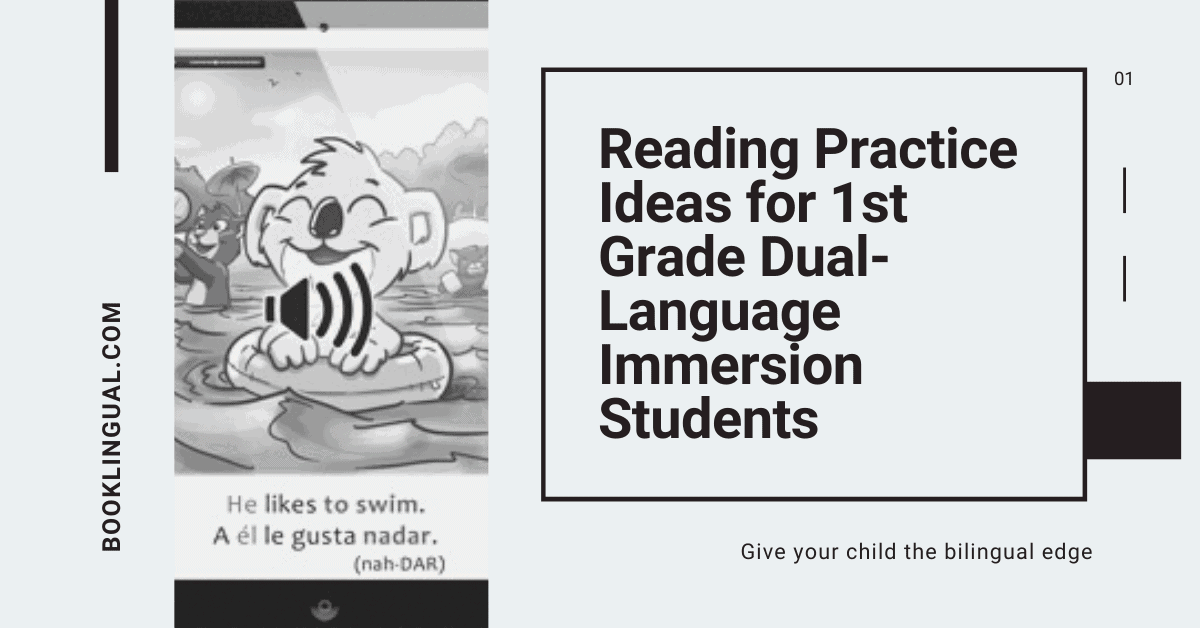Do you need reading practice ideas for your 1st-grade dual-language immersion students? BookLingual is here to help. After all, your child is very special indeed! First graders are now entering their second year of development. As dual-language immersion participants, students not only must develop in a traditional curriculum but not continually add Spanish to their daily routine. Kindergarten was filled with students learning Spanish sounds, and the Spanish alphabet, and should become somewhat comfortable with sounding out and reading very simple sentences.
You may be feeling left out and in the dark. How can I help my child learn to read in Spanish, and practice with him or her? I don’t even know Spanish myself!
Now that your child has entered first grade, there is a great deal of reading progress to be made. Your child will be focusing on many sight words, which are high-frequency words in the Spanish language that should be memorized on sight.

Here are some simple ideas to help your child make substantial progress in reading this year:
1. Read ‘Beginner Reading Level’ Bilingual Books Together
This type of book can be hard to find but will be the most effective for you and your child at this stage. The key is to find interesting basic books that are not only fun but well written. At this stage, an appropriate Level 1 style is necessary. The best books are those written in Spanish, as well as English. This will help you to coach your child better if you do not speak fluently. You can participate and understand what is being told in the story. If the book, eBook, or app has pronunciation audio, this will also be a huge plus. Consequently, you will be able to check your child’s pronunciation and even learn along with him/her.
Here are some ideas to find leveled, bilingual books designed for 1st graders:
BookLingual –– BookLingual books are specially designed to help children in K-3rd grade learn to read as part of their bilingual journey. These books are a top choice for dual-language immersion parents. There are more than 30 books available for purchase.
Language Lizard –– This site offers a very wide selection of bilingual books at different reading levels. You will find a vast array of titles available for order to add to your bilingual resources.
2. Get More Activities and Resources to Help You – The Parent
The key here is for you to get more comfortable with teaching and helping your child in Spanish. Even if you are not fluent in the language, you can still learn and utilize the concepts that are necessary for reading progression. Here are some things to look at and try with your child:
Hagamos Caminos – This is a great set of books designed to help inexperienced Spanish readers. These will be easy for you to work with and administer.
Coquito – This classic reading workbook is used in Latin American countries to help their children learn to read. I use this workbook with my daughter and highly recommend purchasing a copy.
Mommy Maestra – Check out their article titled “Resources for Parents for Children Learning to Read in Spanish/”
Do you have any tips you would like to add for our readers? Please comment and share your resources for getting the most out of our bilingual learners.

Great post, thank for the interesting read.
When I was still in secondary school, I guided at the grade school regularly, particularly working with the same understudies every week that battled with perusing. Through the span of one year, there was a sensational distinction in their expertise levels.
It’s my first time to visit this website & I’m actually stunned to see such notable stuff out there.